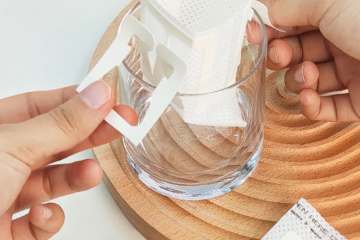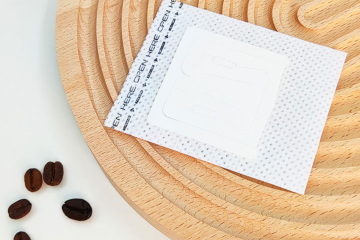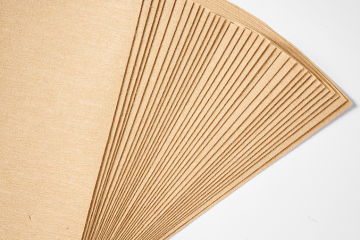Improve him believe opinion offeredCoffee Knowledge
Regarding the question of whether to wet the filter paper for hand-brewed coffee, this is indeed a detail worth discussing.
Let’s take a deeper look today!
Coffee filter paper classification:
Paper coffee filter paper: This is the most widely used one. Paper filter paper can effectively filter out coffee grounds and oils, making the coffee taste more refreshing.
Ordinary filter paper: simple material and easy to use.
Cotton paper filter paper: Made of renewable natural cotton fiber material, it is relatively thick, but it can make the coffee richer and taste more mellow.
Bamboo pulp filter paper: Made of bamboo fiber, it is strong and can avoid affecting the flavor of coffee.
Metal filter mesh: Such as stainless steel filter mesh, can be reused to filter out more coffee oils and make the coffee taste richer. But it is easy to leave coffee grounds, so special attention should be paid to cleaning.
Coffee filter paper shape classification:
Conical filter paper: The filter paper angle is 60°, suitable for single-hole conical filter cups such as V60 filter cups and KONO filter cups. The models are divided into 01 and 02. 01 filter paper is suitable for brewing filter cups for 1-2 people, and 02 filter paper is suitable for brewing filter cups for 2-4 people.
Trapezoidal (fan-shaped) filter paper: The filter paper is fan-shaped and suitable for Kalita, Melitta and smart cups. The models are divided into 101 and 102. 101 is suitable for brewing filter cups for 1-2 people, and 102 filter paper is suitable for brewing filter cups for 2-4 people.
Corrugated (cake cup type) filter paper: The filter paper looks like the paper tray of traditional cupcakes, with a three-dimensional structure, a flat bottom, and uniform wavy folds around. The models are divided into 155 and 185. 155 is suitable for brewing filter cups for 1-2 people, and 185 filter paper is suitable for brewing filter cups for 2-4 people.
Classification of coffee filter paper bleaching treatment:
Original color coffee filter paper: refers to coffee filter paper that has not been bleached and looks close to light brown. This kind of filter paper does not have the bleaching process, but the smell of the filter paper itself is aggravated. It is necessary to fully soak the filter paper with boiling water when brewing coffee to reduce the smell of paper entering the coffee.
White coffee filter paper: imported bleached filter paper is used, and there are strict requirements in material selection, process and quality control. Enzyme bleaching is used in the bleaching process. This enzyme bleaching is biologically active enzyme bleaching, which has been widely used in the medical field and the degree of harm is almost negligible.
The impact of different coffee filter papers on coffee:
Flavor impact:
Poor quality filter paper: The taste of pulp may be dissolved into coffee, affecting the original taste of coffee. In order to avoid the smell of paper, it is recommended to scald the filter paper with hot water first.
High-quality filter paper: If bleached filter paper is used, the smell of paper is not obvious and will hardly affect the taste of coffee.
Filtration effect:
Fiber length and thickness: The fiber length and thickness of the filter paper will affect its filtration effect. For example, thicker filter paper, such as American Chemex filter paper, can filter out most impurities because of its thickness, making the taste better.
Oil retention: The filtering effect of different filter papers will affect the amount of oil retained in coffee. Oil is an important flavor component in coffee, which can increase the mellowness and taste of coffee.
Flow rate and extraction time:
Water filtration: The water filtration of filter papers of different brands is different, which will affect the soaking time and flow rate of coffee. In order to maintain the consistency of coffee, it is necessary to keep the coffee soaking time as standardized as possible.
Flow rate: Thin filter paper is easy to fit the filter cup and restore the effect of the filter cup, but the flow rate may be faster. Thick filter paper will slow down the flow rate, but the filtering effect may be better.
Fit and shape:
Shape and size: The shape and size of the filter paper determine the fit between the filter paper and the filter cup. Filter paper with mismatched shapes may lead to negative effects such as uneven coffee extraction.
Fit: The fit between the filter paper and the filter cup will affect the extraction effect of coffee. Good fit can ensure that the coffee liquid passes through the filter paper evenly and improve the extraction efficiency.
Should you wet the coffee filter paper for hand brewed coffee:
Reasons for wetting the filter paper:
Remove the smell of the filter paper: Wetting the filter paper can remove the paper smell of the filter paper itself and ensure that the original taste of the coffee is not affected.
Better fit to the filter cup: The wetted filter paper is easier to fit to the filter cup, reducing the side leakage of coffee during the brewing process.
Preheating the filter cup: Wetting the filter paper also preheats the filter cup, which helps to maintain the temperature of the coffee during the brewing process and better extract the flavor of the coffee.
Reasons for not wetting the filter paper:
Most modern filter papers are odorless and non-toxic: Modern filter papers are mostly bleached with bioactive enzymes, which are odorless and non-toxic, so there is no need to wet them to remove the paper smell.
The weight of the coffee powder itself can make the filter paper fit: After the coffee powder is poured into the filter paper, its own weight can make the filter paper fit the filter cup, without the need for additional wetting.
Wetting the filter paper may affect the uniformity of extraction: after wetting the filter paper, the coffee powder on the edge will contact the water first, which may cause the outer coffee powder to be extracted prematurely, affecting the uniformity of the overall extraction.
Whether to wet the filter paper depends mainly on personal taste preferences and pursuit of coffee quality. If you pursue a purer and original coffee experience, or use filter paper that is easy to absorb odors, then wetting the filter paper is a good choice. But if you want to retain more of the original flavor of the coffee, or have high requirements for the quality of the filter paper, you can choose not to wet the filter paper.




0 Comments